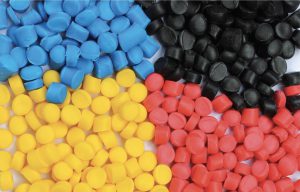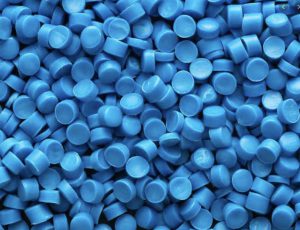The coronavirus disease 2019 (COVID-19) pandemic is an unprecedented global crisis that, by many calculations will have a deep and devastating economic and social impact on the scale of the Great Depression, and in the process will far surpass the fallout from the 2008-09 recession.
Apart from the direct economic and business impact, it is becoming clear that this pandemic will also cause far-reaching structural and behavioral shifts: people working more from home, increased expenditure on health and wellbeing, preference for online shopping, and reduced discretionary expenditure, to name a few.
For plastics, the big question is: will the impact outpace or lag the economic fallout? At the outset, this crisis gave plastics a major image makeover amongst consumers; there is now a widely held view that plastic products are safer and cleaner than the recycled and reusable solutions being touted earlier and are at the forefront of the fight to contain the spread of contagion. Gone are the days when plastics will be spoken of only in terms of environmental leakage and a ban.
Plastics will also benefit from increased spending on household cleaning, hygiene, and personal protection products, as well as higher domestic food consumption from a more homebased life. However, because this crisis will also cause deep destruction of personal wealth and economic uncertainty, consumers will also reduce discretionary spending on leisure, entertainment, travel and tourism, and eating out, which will impact related plastics consumption. Apart from these areas of the economy, major sectors including automotive and white goods will also face tremendous headwinds.
Global light vehicle production is expected to drop more than 20% because of the COVID-19 pandemic—nearly a 19 million unit decline over 2019, according to the latest IHS Markit forecasts. The biggest disruption is expected to hit in the first half of the year, with year-over-year output expected to be down by 24% in the first quarter, and by 44% in the second quarter as lockdown measures intensify.
Plastics on the global front combating the COVID-19 outbreak
Public discussions about plastics in 2019 were dominated by sustainability actions with a focus on packaging and environmental pollution problems. Single-use plastic was facing more scrutiny than it ever had because of consumer and regulatory backlash; however, usage in the medical industry could be the area where individual consumers have the least negative view. The pandemic is putting plastics at the heart of the fight and treatment. Ventilators, masks, and personal protective equipment (PPE).
Plastics have revolutionized the medical industry and represent the largest group of materials used in medical technology today. Plastics used in healthcare can be advanced medical-grade polymer materials that comply with regulatory standards specifically engineered for medical usage or commonly found plastics used in consumer packaging. Plastics are valued in healthcare because of their versatility, sterile nature, safety for patients and providers, cost effectiveness, ease of use, and utility in new applications and solutions.
There is an almost endless list of medical applications for plastics. Polyvinyl chloride (PVC) can be found in approximately 40% of all disposable medical devices, including flexible fluid bags, tubing, oxygen, masks, surgical gloves, etc. Polycarbonate (PC) is the material of choice for medical devices and equipment, replacing glass applications in items such as blood oxygenators, hemodialyzers, intravenous connectors, and high pressure syringes, in addition to safety glasses and face shields. Given its clarity and ease of sterilization, polystyrene (PS) is used for a wide range of applications, including tissue culture trays, test tubes, petri dishes, diagnostic components, and housings for tests. Plastics will continue to offer exceptional solutions in the future.
COVID-19 hits the economy where it hurts: consumer confidence, which slows downstream demand in many segments. Polymer demand is impacted in the short, medium, and long term. The intensity of the effect differs according to the market segments. A negative demand impact is expected to continue into 2021. IHS Markit offers a long-term outlook 10 year forecast on supply, demand, price and margin globally and on a country level, along with a live capacity database and trade flow analysis on a country-to-country basis in our World Analysis (WA) service.
The transition to plastics sustainability faces new challenges but remains a global priority even with the pandemic, oil price, economic downturn. The issues are not going away but rather need to be addressed in a more challenging environment than envisioned just a few months past. The current market volatility forces companies to reinvent themselves creating a pivotal time to adopt forward thinking policies to come out a leader in the industry.
IHS Markit is developing a special study, “Changing Course: Plastics, Carbon and the Transition to Circularity”, which will provide a comprehensive understanding of the current regulatory environment, stakeholder policies and industry group/NGO initiatives and how these activities will develop under different scenarios for society’s transition to circularity. The study will also provide an understanding how alternative technologies for recycling and recovery, both mechanical and chemical, will develop and fit within an overall macro infrastructure / reverse supply chain designed for circularity.
Posted 12 May 2020 by Kaushik Mitra, Director EMEA Polyolefins Market Research, IHS Markit and
Martin Wiesweg, Executive Director Polymers EMEA, IHS Markit









